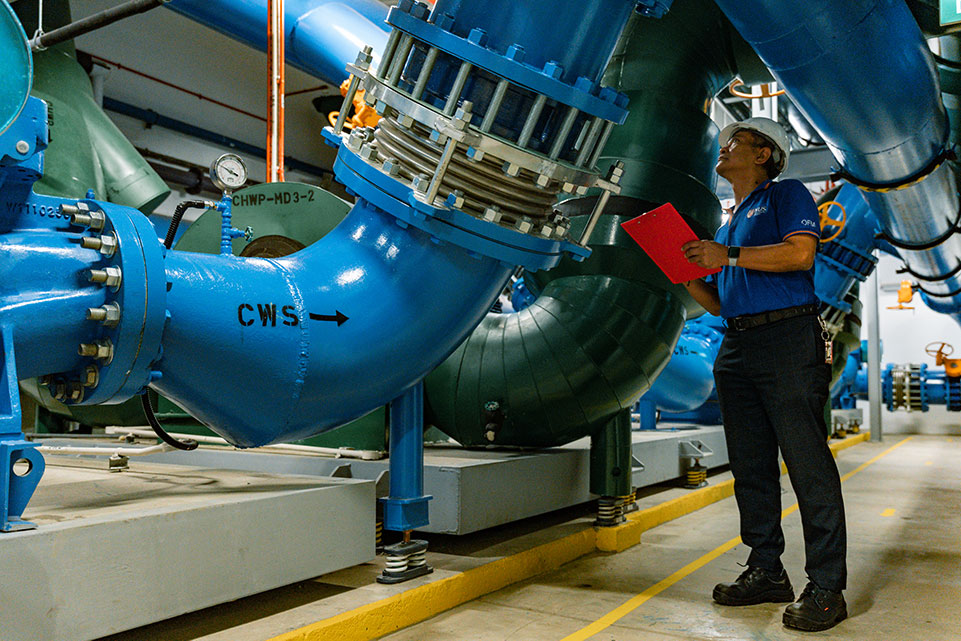District Cooling on Campus
District cooling is the production and distribution of chilled water from a central source to multiple buildings for air-conditioning. It serves buildings close to one another within a radius up to two kilometers from the central chilled water source.
Buildings using a centralised district cooling system enjoy energy savings of up to 40 per cent compared to traditional air-conditioning systems where each building is served by a standalone chiller plant room and cooling tower. This is achieved by leveraging economies of scale and optimising asset efficiency.
NUS built its first district cooling plant in University Town (UTown) – also a first for a tertiary institution in Singapore – to enable the cooling needs of its buildings to be met in as efficient a manner as possible.
Subsequently, mini district cooling plants were developed at the Arts and Social Sciences, Science/Medicine and Engineering precincts through chiller plant upgrading and consolidation works across the campus. Since 2012, a total of 12 upgrading projects have been carried out.
The chiller plant upgrading, consolidation and optimisation was a major contributor to energy savings on campus over the same period. More than 75m kWh of electricity would have been saved from 2012 to 2019 as a results of these various chiller plant consolidation and optimisation projects.

